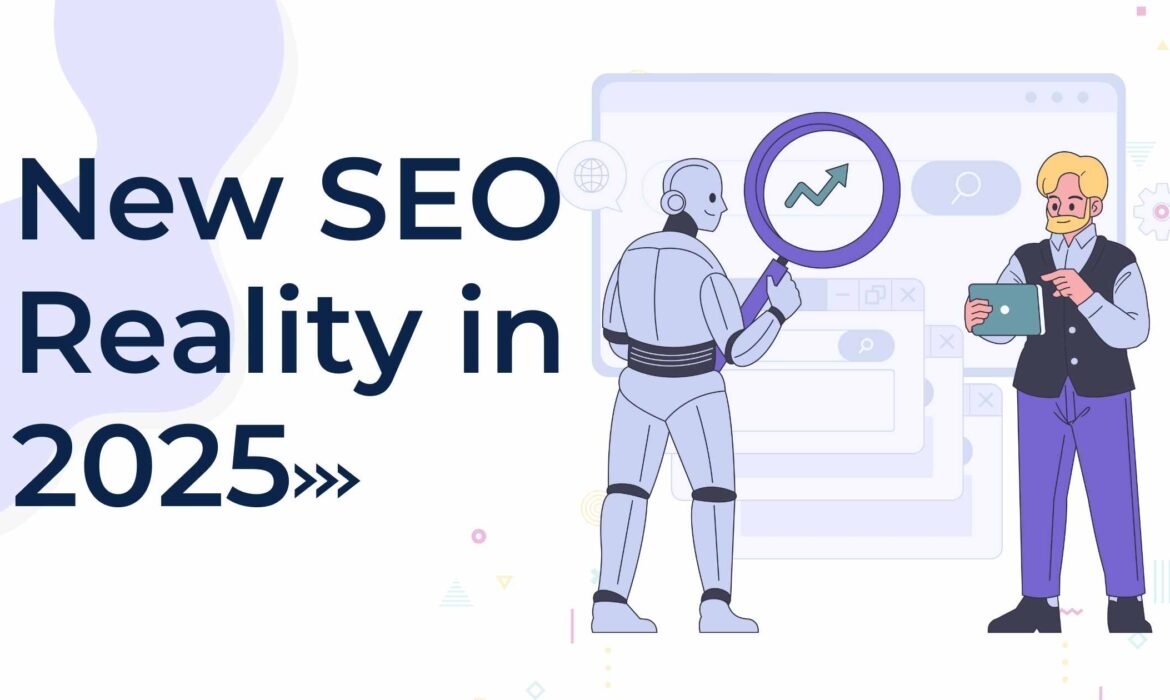
In 2025, SEO is no longer about checklists and keyword stuffing. Google’s algorithm is smarter than ever. It focuses on real user behavior, intent, and the quality of your content rather than how many keywords you use or how many backlinks you buy.
If you’re still applying outdated SEO techniques like overusing keywords or chasing hundreds of backlinks, you’re already behind. Today, success comes from understanding how Google’s algorithm reacts to user patterns, content structure, and credibility.
Backlinks Still Matter, But Not the Way You Think
Let’s break a common myth. Google still uses backlinks as a ranking signal in 2025, but it’s not about volume anymore. It’s about context, authority, and intent.
Think of it this way: if you run a small clothing boutique in your town and a respected local stylist or fashion blogger writes about your store and links to your site, that one backlink is extremely valuable. It tells Google that your business is known and trusted in your niche and local area.
Compare that to buying 100 backlinks from random blogs that have no connection to your business. Those links may increase your backlink count, but they add no real value. Google may ignore them or even flag them as spammy.
Good vs. Bad Backlinks
Type of Backlink | Impact on SEO in 2025 |
Link from a local site in your niche | Strongly positive. Builds local authority and relevance |
Link from unrelated, low-quality global blog | Low or no value. Often ignored by Google |
Anchor text like “best florist in New York” | Helps Google connect your site with relevant searches |
Anchor text like “click here” or “homepage” | Weak signal. Offers no semantic clarity |
Google rewards real backlinks that reflect trust, relevance, and user intention. These are the links that actually help your rankings. You can explore options for building these types of links with this resource on Quality backlinks for GBP.
Understanding the Google Diversity Filter
Another key factor in 2025 is the Google Diversity Algorithm. This limits how many results from the same business or brand can appear for a single search.
For example, one of my clients ranked top 3 in the map pack for “emergency dentist Houston” but didn’t show up in the organic listings. We discovered their site was being filtered due to diversity. Once we created new landing pages targeting related but different terms, they started ranking in both the map and organic sections.
This isn’t a penalty. It’s Google trying to show users a variety of sources. But if you understand how it works, you can structure your strategy to appear in multiple areas of the SERP.
You Influence Rankings More Than You Think
It might sound surprising, but you control a lot more than you realize. Google reacts to the signals you send through your content.
- If you want to rank in video carousels, create helpful, well-optimized videos
- If you want to show up in People Also Ask boxes, structure your content with clear questions and answers
- If you want to appear in AI Overviews, format your content clearly, cite trustworthy sources, and demonstrate expertise
The algorithm is designed to reflect what users want. If your content delivers that value, Google will pick up on those patterns and boost your visibility.
SERP Features: What Google Prioritizes in 2025
SERP Feature | What Google Looks For |
AI Overviews | Clear formatting, trusted sources, concise answers |
People Also Ask Box | Direct question and answer structure |
Video Carousel | Relevant topics, high watch time, optimized metadata |
Featured Snippets | Summarized information, bulletproof formatting, trusted domains |
Instead of trying to hack the algorithm, look at what’s already working and build your strategy around those patterns.
How to Build a Smart SEO Strategy in 2025
Rather than searching for generic tips, start with your own keywords. Search them. Study what’s ranking. Is it blog content? YouTube videos? Local directories? Check who appears in multiple spots. See what Google is currently rewarding.
When I wanted to rank for “best SEO strategist,” I didn’t publish a long blog post and hope. I analyzed the SERP. I created video content, updated my bio, and built authority around topics already appearing in AI Overviews. That’s why it worked.
This same reverse-engineering method works in any niche. You’re not trying to trick the algorithm. You’re helping it do its job.
Watch: How to Rank on Google in 2025 Using Algorithm-Driven SEO
Optimization Alone Is Not Enough For Local SEO
A lot of local businesses think that just optimizing their Google Business Profile is enough. But what really drives rankings is user behavior. Google looks at signals like:
- How many people click on your listing
- How often you receive new reviews
- How quickly and actively you respond to questions
- How much engagement your listing gets
Two businesses can have identical profiles, but the one with active interaction and consistent user engagement will rank higher. Google is paying attention to those signals in real time.
How Google’s Local SEO Algorithm Really Works in 2025
So, Align Your Strategy With Google Algorithm System
If you’re still treating SEO like a to-do list, you’ll always be behind. Google in 2025 is driven by real-time behavior, content quality, and trust. Ask smarter questions. What does the algorithm reward in your space? How are your top competitors structuring their content? How are people interacting with their sites?
This is not about finding a magic trick. It’s about building clarity and authority, then letting Google do what it’s designed to do: reward what users love.
About the Author
I’m Dua Ansar, an SEO strategist helping service-based brands rank through algorithm-first strategies. My focus is on what works now, not what worked five years ago.



